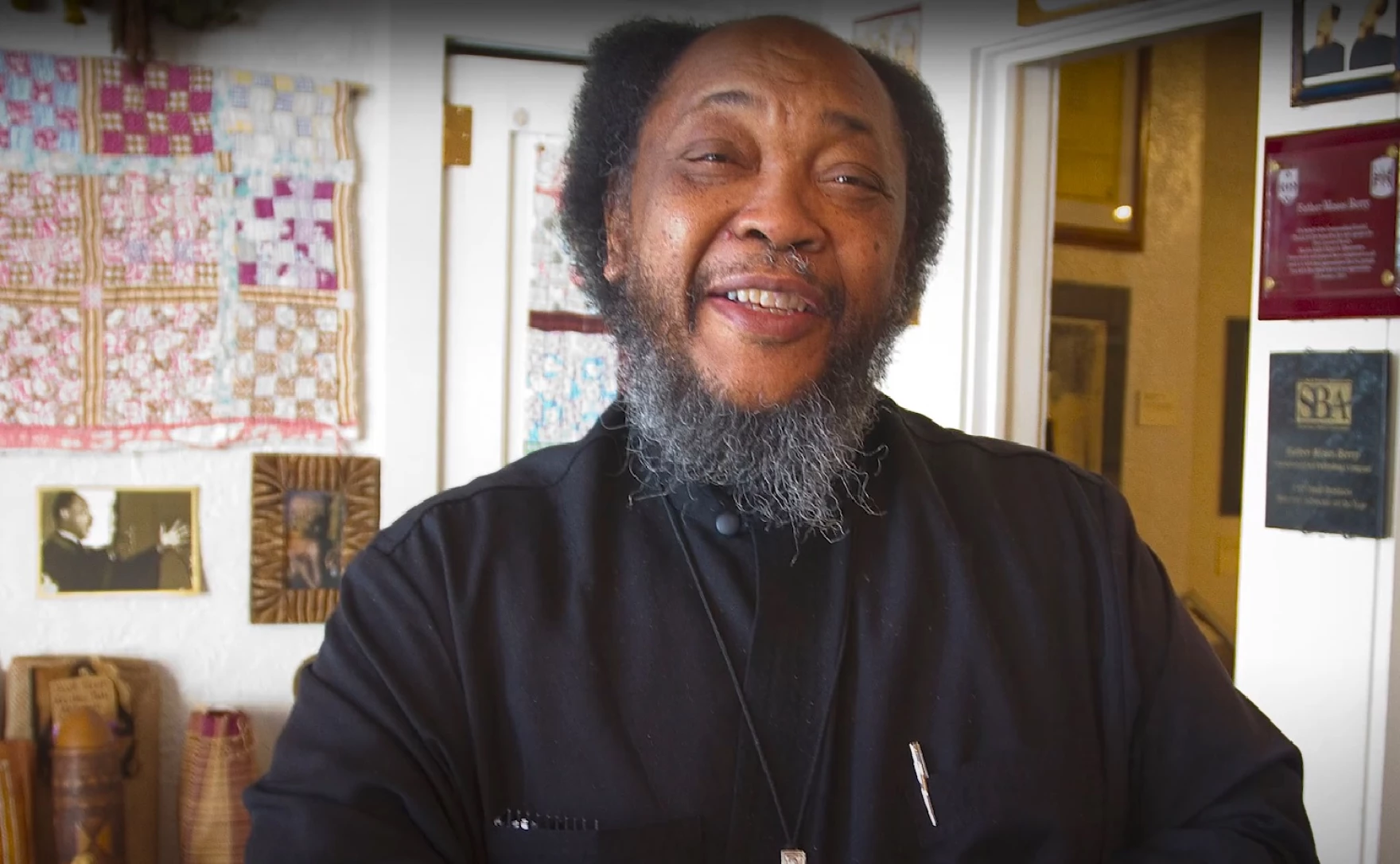
January 14, 2024
Father Moses Berry, Prominent Missouri Faith Leader And Museum Founder, Dies
Despite his focus on his Missouri hometown, Father Moses Berry became known nationwide, with the "New York Times" describing him as a "one-man racial reconciliation committee."
On Jan. 12, Father Moses Berry died in hospice care after being hospitalized for months.
As KSMU reported, Berry, who was in his early 70s, was a prominent member of the Missouri faith community, and created the Ozarks Afro-American Heritage Museum.
“All of our friends encouraged us to start a museum,” Berry told OzarksWatch in 2003. “Well, we weren’t quite ready to do that, but I’m always moved by the African-American proverb that says ‘start before you’re ready.’“
Through 2013, Berry curated the museum, which chronicled the history of the town where he was born and the place where his ancestors lived. The collection has now been digitized by Berry’s daughter, Dorothy, and features artifacts, some of which go back to the 1830s.
The collection includes quilts, furniture, portraits, horse equipment and toys which serve to paint a picture of Black American life, family traditions, and rural life. The collection also contains some of the constraints of life for enslaved people, including ankle chains, screw locks, and neck irons.
Despite his focus on his hometown and community, Berry became known across the country. The New York Times described him as a “one-man racial reconciliation committee” due to his work sharing both Black history and Orthodox Christian spirituality. In 2022, Berry was honored by the Eastern Orthodox Church with the highest honor bestowed upon a priest, the Jeweled Cross. In 2023, Missouri State University inducted Berry into the Missouri Public Affairs Hall of Fame.
Berry went on a spiritual pilgrimage for much of his life that eventually led him to return to the land that birthed him. “It’s home to me,” Berry said. “It’s, as a matter of fact, when I came back here, it was almost like coming to a mythical place. Because all my most fond memories occurred in this town. So, sort of like a little Tom Sawyer, Huckleberry Finn town, and I grew up here. So coming back was more than just returning home. And you know the old expression, people say you can never come home. I found that not to be the case here.”
According to the Springfield News-Leader, Berry returned to Ash Grove after he inherited the family farm built by his great-grandfather in 1875. Berry’s antecedents created the space following their freedom from enslavement after the Civil War. Part of the property includes a cemetery, which was renamed Resurrection Cemetery.
Originally dedicated in 1875 to “Slaves, Indians, and Paupers,” all groups who were traditionally denied spaces to be buried in Missouri’s segregated cemetery system. Resurrection Cemetery is currently listed on both the national and Greene County registers of historic places.
RELATED CONTENT: How the Campbell Family Built Generations Of Property Ownership And Community Building